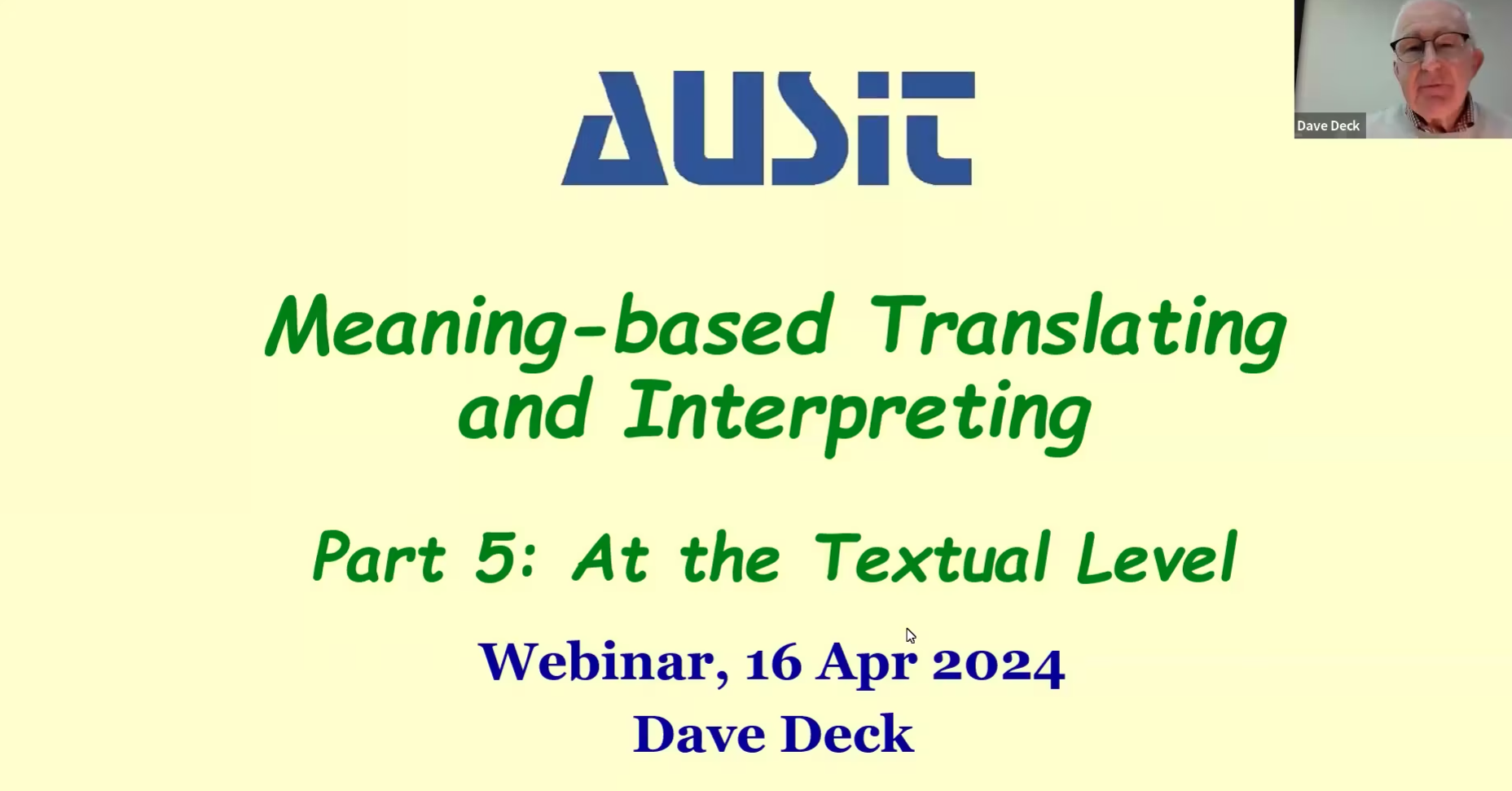| THE AUSTRALIAN INSTITUTE OF INTERPRETERS AND TRANSLATORS INC. |
AUSIT Webinar | 20240416 Meaning-based Translating PT5 (At the Textual Level) (INDIVIDUAL)
Description
Making correct and valid linguistic choices when translating and interpreting, especially in the ‘pressure-cooker’ environment of interpreting, requires practitioners to have a good understanding of the principles which underlie the transfer of meaning between languages. This understanding is also invaluable on the occasions – which are bound to occur sooner or later – when clients or other professionals challenge us on the linguistic choices we’ve made.
This training event is intended to complement some of the issues covered in four previous webinars on Meaning-based Translating and Interpreting conducted on 07 May 2018 (general overview), 28 May 2019 (equivalence at the word level), 28 February 2023 (equivalence at the phrase level), and 23 August 2023 (equivalence at the grammatical level). All of these are available – the first two now free of charge for AUSIT members – on the AUSIT website, if you didn’t have an opportunity to participate at the time. This training event is designed to be a stand-alone session, but as background to it you may find it useful to view any of those previous sessions (especially the first).
This training event will focus on the transfer of meaning, and the various ways of achieving a suitable degree of equivalence, at the level of cohesiveness and text-flow structures, above the level of sentences (paragraphs, whole texts). The content will include the following:
- by way of background, a quick review of the concept of translating and interpreting being ‘meaning-based’, and the concept of ‘equivalence’ of meaning;
- why textual structures (encompassing the two areas mentioned above) present problems for translators and interpreters;
- the specific 'translation challenges' posed by cohesiveness structures and linking devices of various kinds;
- similarly, the specific translation challenges posed by text-flow and emphasis structures; and
acceptable strategies for dealing with all these translation challenges.
Webinar Duration: 1 hr, 45 minutes

